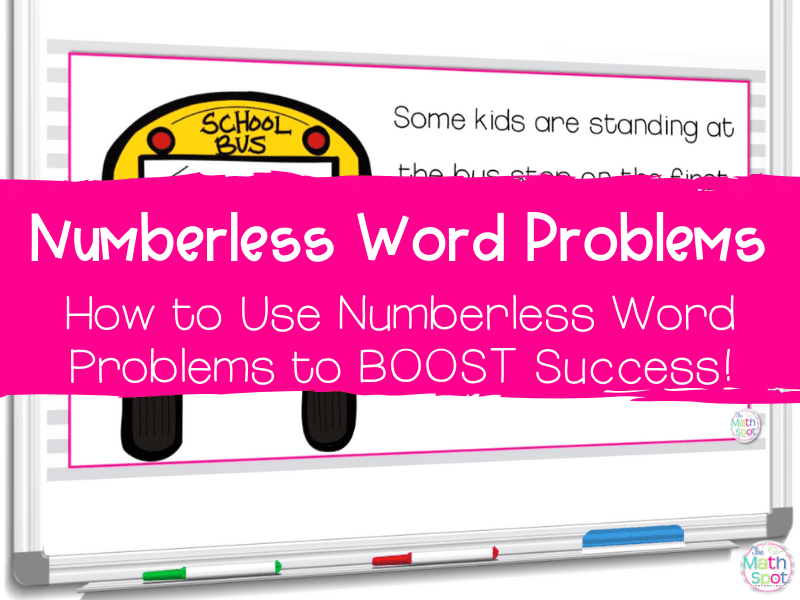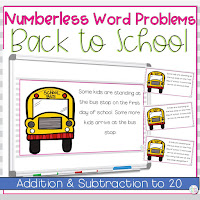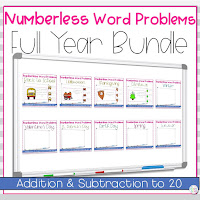I’ve taught a few “number pluckers” in the past.
You too?
I’m not surprised! Number pluckers are those kids who, upon seeing a word problem, expertly “pluck” out the numbers and add them together.
Done!
I did it!
I know you are shaking your head and smirking right now. It’s an unavoidable rite of passage for all teachers to try and reach a number plucker.
You KNOW I want you to avoid using keywords to help these students… but what can you do instead?
Enter Numberless Word Problems!
What is a Numberless Word Problem?
Numberless word problem is a *bit* of a misnomer! These problems DO have numbers… we just aren’t taking a look at them right away.
When we create a numberless problem, our goal is to draw our students’ focus to the context of a story problem rather than to the numbers in the problem.
In presenting a numberless problem to your students you will slowly unfold the problem and ask questions which will prompt your students to attend to:
- The action of the problem.
- The information they have been given.
- The information they may be missing.
- The words in the problem and what they mean or imply.
- The question or questions that could be asked or answered with that information.
Your number pluckers will have no choice but to attend to the action of the problem- there is no other choice!
How Do I Teach a Numberless Word Problem?
Begin by showing your students a context. No numbers. No question. Take a look at this example:
You and your students will read the context and you will prompt your students to discuss what they are seeing.
- What is happening in this story?
- What could be the number of kids who started at the bus stop?
- If more kids arrived is the number of kids at the bus stop getting larger or smaller?
Next, you will show your students a *bit* more information. In this scenario, I added the number of kids who showed up at the bus stop.
- What new information do we have?
- Could you draw a quick picture that shows what happened?
- What information do we still need to know?
You will finally reveal all of the numeric information in the word problem… but notice… there is still no question!
- What new information have we been given?
- Can you draw a quick picture that shows what is happening now?
- How did your picture change?
- What question could we ask about this information?
Lastly, you will add the question into the story and allow your students to solve. Still, you will want to conduct a conversation with your students!
- What operation do you think can help us solve this problem?
- Could you draw a model that matches this story problem?
- What question are you answering? Could you turn your answer into a statement?
- What is your answer? Does it make sense?
- How do you know?
Is This Too Much of a Crutch?
No.
You are training your students to think about the context of word problems. This is a scaffold that is SO important for your students! Each grade level attends to specific problem types. Some are more straight forward (add to with a missing total for example) and some are much more difficult (a comparison word problem or a subtraction problem where the change is unknown for example).
These type of problems help our students learn to dissect a problem and think about the action and context so that they can be successful in the future!
Are you ready to give this strategy a try? Grab my free “Getting Started Guide” which includes problems to get you started today!
Related Resources:
Pin For Later:









